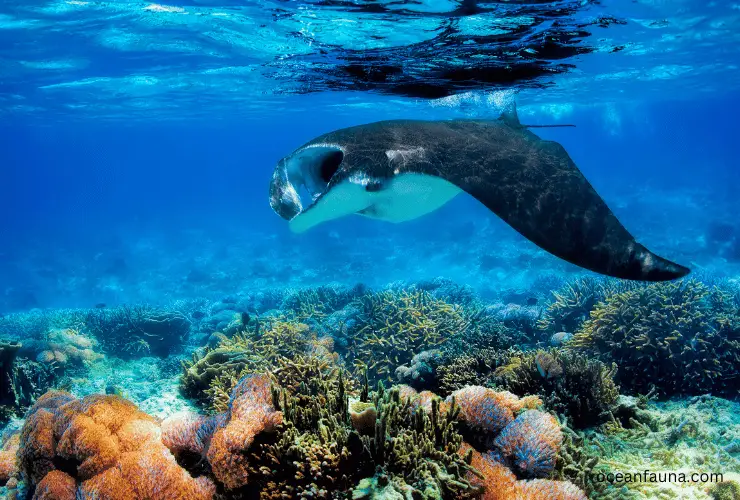Manta rays are vulnerable to predation from several species of shark, including bull, tiger, and oceanic white-tip sharks, as well as seals and sea lions. Some Whales, like Killer Whales can also be added to this list. They are also sometimes hunted by humans for their meat, fins, and other body parts.
Additionally, humans sometimes hunt Manta Rays for their meat, fins, and other body parts, which are valued in some cultures for their use in traditional medicines and as food.
However, Manta Rays have few natural predators due to their large size and ability to defend themselves.
Nevertheless, populations of Manta Rays have declined significantly in recent years due to overfishing and other human activities, leading to increased conservation efforts to protect these magnificent creatures and their habitats.
Do Manta Rays Have Predators?
Manta Rays have few natural predators, but some of their potential predators include large marine animals such as whale sharks, tiger sharks, and killer whales. In some cases, pods of dolphins may also hunt Manta Rays.
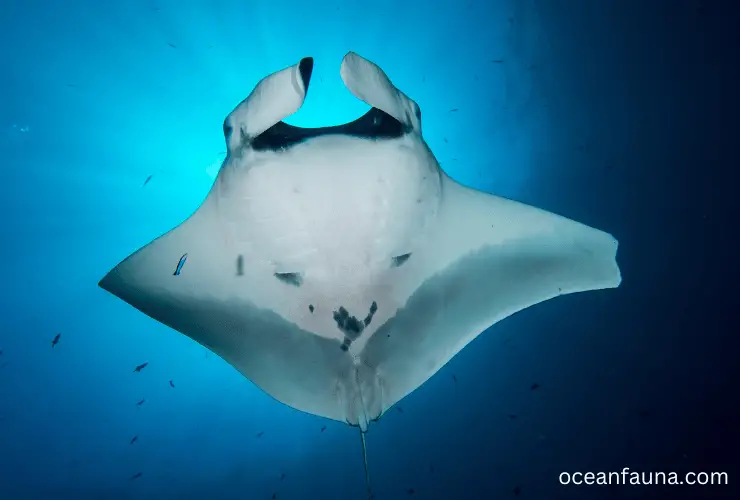
Juvenile Manta Rays are more vulnerable to predators because they are smaller in size.
However, the biggest threat to Manta Rays is human activity, such as overfishing and hunting for their gill plates, which are used in traditional Chinese medicine, and for their meat, which is considered a delicacy in some cultures.
In the source used above, the trends of Manta Ray killings have been observed.
From 2014 to 2016, it can clearly be seen that more or equal amounts of Devil Rays were killed as compared to Manta Rays, but as we move forward in time, it can clearly be seen that a highly proportional amount of Manta Rays were killed as compared to Devil Rays.
Do Sharks Eat Manta Rays?
Yes, sharks do eat Manta Rays. Manta Rays are part of a shark’s diet and can be found in the stomach of some species of shark, such as the tiger shark. However, not all sharks eat Manta Rays, and some species may not consider them a preferred food source.
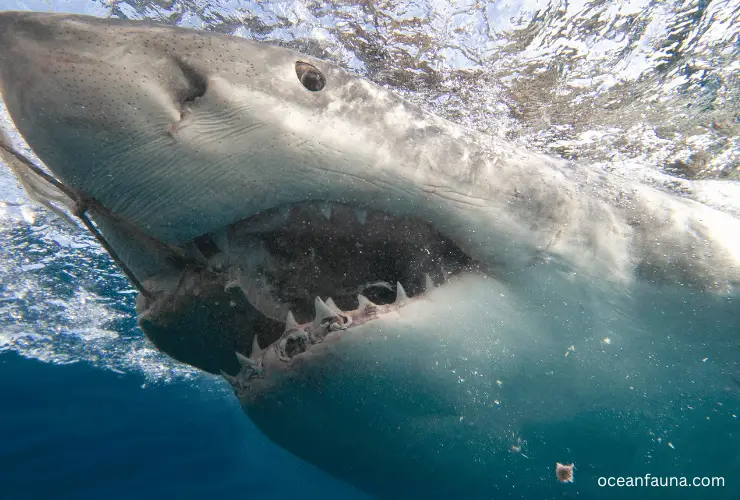
The size and behavior of Manta Rays can also play a role in whether or not they are preyed upon by sharks. Manta Rays are large and have been observed using evasive tactics when confronted by a shark, making them a less vulnerable target compared to smaller fish.
What Kind of Sharks Eats A Manta Ray?
Several species of sharks have been known to feed on Manta Rays. Some of the most commonly reported species, according to our source, include:
- Tiger shark: The tiger shark is one of the largest shark species and is known to feed on a wide variety of prey, including Manta Rays.
- Bull shark: The bull shark is a powerful predator that is often found near the coast and is known to feed on large, slow-moving animals such as Manta Rays.
- Great White Shark: The great white shark is one of the most well-known species of shark and is known to feed on a variety of large prey, including seals, sea lions, and Manta Rays.
- Blacktip Shark: The blacktip shark is a smaller shark often found in shallow, warm waters and is known to feed on smaller species of Manta Rays.
- Hammerhead Shark: Hammerhead sharks are known to feed on a variety of prey, including Manta Rays. They are capable of using their unique, hammer-shaped heads to locate and capture their prey.
- Silvertip Shark: Silvertip sharks are known to be aggressive predators that feed on a variety of large prey, including Manta Rays. They are found in deep waters and are capable of hunting both day and night.
Do Whales Eat Manta Rays?
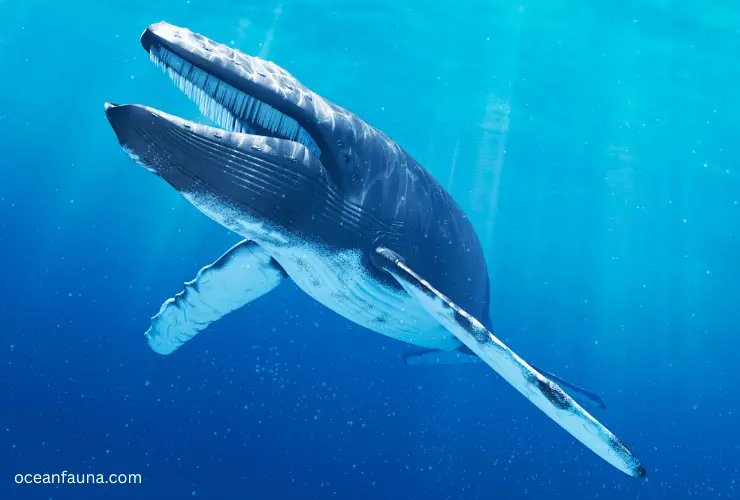
Yes, Whales do prey on Manta Rays. Even though Manta Rays are not the main source of food for Whales, there have been rare instances where certain species of whales, such as the killer whale, have been observed preying on different species of rays, including manta rays.
What Kind of Whale Eats Manta Rays?
The Different species of Whales that have been seen preying on Manta Rays are: Killer Whales, False Killer Whales and Pilot Whales.
- Killer Whales
Although Manta Rays are not a typical prey item for killer whales, there have been reports of killer whales attacking and eating Manta Rays in the wild.
This behavior is not well understood, and it is not clear if it is a common occurrence or if it is limited to specific populations of killer whales in specific regions.
It is possible that the killer whales are attacking the Manta Rays as a form of play or as part of their hunting strategy.
Manta Rays are known to be very agile and can outmaneuver many of their predators, making them a challenging prey item. Some experts believe that killer whales may be testing their hunting skills and improving their abilities by hunting Manta Rays.
- Pilot Whales
In some rare cases, they have been observed consuming Manta Rays. They are not a common prey item for pilot whales, but they can take down large prey due to their size and hunting abilities.
When pilot whales consume Manta Rays, they likely do so by cornering the manta and using their sharp teeth to tear off pieces of flesh. This behavior has been observed in a few isolated incidents but is not a regular part of the pilot whale’s diet.
It is also possible that the Manta Rays were accidentally swallowed while the whales were hunting for other prey. Overall, the consumption of Manta Rays by pilot whales is a rare event, and more research is needed to understand this behavior’s dynamics fully.
How do Sharks and Whales Eat Manta Rays?
Sharks
The process usually begins when the shark detects the presence of Manta Rays in the water. The shark will swim towards the Manta Rays, usually from below, since Manta Rays are surface dwellers.
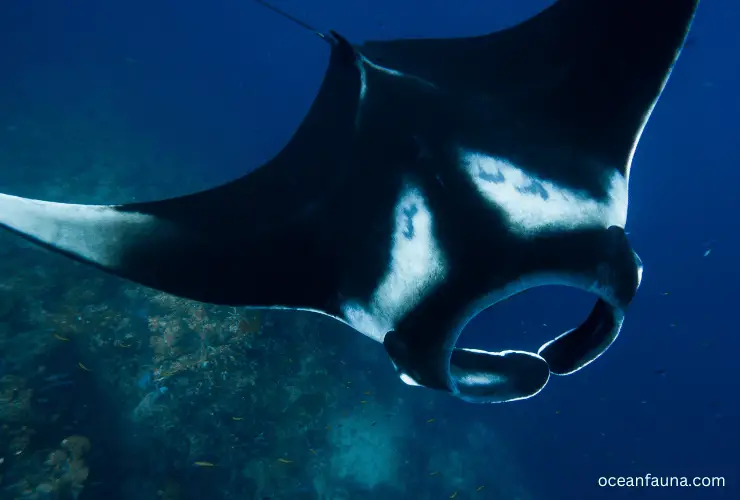
Once the shark is close enough, it will launch an attack by biting the Manta Rays with its sharp teeth.
The Manta Rays will try to defend itself by using its large pectoral fins to swipe at the shark or by quickly swimming away. However, if the shark is determined, it will persist in its attack until the Manta Rays are seriously injured or dead.
Once the Manta Rays can no longer resist, the shark will start to feed, tearing off chunks of flesh and swallowing them whole. The shark will continue to feed until it has eaten its fill or until no more meat is left on the Manta Rays’s body.
Whales
Once the whale has located a Manta Rays, it would likely use its massive size and strength to attack it. Whales have been known to use their tails or bodies to slap or ram into their prey, stunning or killing it.
In the case of a Manta Rays, the whale would likely use its mouth to bite into the Manta Rays’s body, trying to subdue it.
If the attack is successful, the whale would then begin to consume the Manta Rays. Whales have large, flexible mouths that allow them to consume large amounts of food in one bite.
They would likely tear off chunks of the Manta Rays’ flesh and swallow them whole, using their baleen plates to filter out any inedible parts.
While the process above may seem brutal, it is a natural part of the ocean’s food chain and ensures the survival of both species.
Do Humans Eat Manta Rays?
Yes, humans do consume Manta Rays. Humans consume Manta Rays for various reasons, including cultural practices, taste preferences, and commercial purposes.
Manta Rays are considered a delicacy in some countries, such as China and Japan, where they are often used in traditional dishes and medicinal remedies.
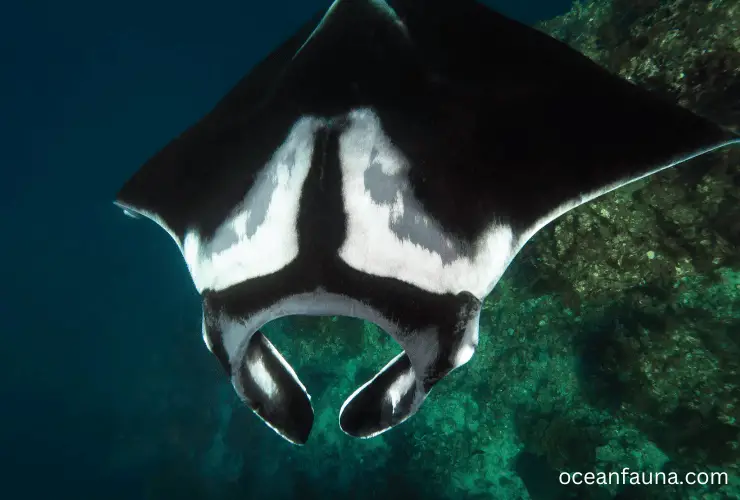
Additionally, Manta Rays are harvested for their gill plates, which are believed to have health benefits and are used in traditional Chinese medicine. In some regions, Manta Rays are also fished for their meat, which is considered a valuable source of food for communities that rely on fishing for their livelihoods.
Moreover, Manta Rays tourism, in which divers pay to observe the creatures in their natural habitats, has become a major industry in some countries, leading to an increased demand for Manta Rays-based products, such as souvenirs made from their fins and tails.
FAQs
What is the biggest threat to manta rays?
The biggest threat to manta rays is human activities, including overfishing, bycatch, and habitat destruction. Manta rays are often caught unintentionally as bycatch in fishing nets, and they are also targeted for their gill plates, that are used in traditional Chinese medicine.
Additionally, manta rays are highly vulnerable to habitat degradation and destruction, particularly through pollution, climate change, and coastal development.
Why do sharks eat manta rays?
Sharks are opportunistic predators that consume a variety of prey, including manta rays. Sharks may feed on manta rays for several reasons, such as competition for resources, predation on weakened or injured individuals, or as a part of their natural diet. Manta rays have no defense mechanisms against sharks, and their slow movement and large size make them an easy target.
How do manta rays escape predators?
Manta rays use their speed, agility, camouflage, schooling behavior, and jumping to evade predators. Their large size and powerful muscles allow them to swim at high speeds, while their maneuverable body helps them make sudden turns and dodge attacks. Their dark upper surface helps them blend in with the ocean floor, and they sometimes form schools or leap out of the water to confuse and deter predators. These strategies have evolved over time, and help manta rays survive in the ocean despite the presence of predators.
What kills manta rays?
There are multiple things that account for the killing of Manta Rays.
Human activities such as overfishing, accidental capture in fishing gear, and pollution. Parasites and diseases can also impact their health and survival.
Conclusion
Manta Rays are protected in some countries and under international agreements, and consuming them in those areas may be illegal.
For example, in the United States, Manta Rays are protected under the Endangered Species Act and the Convention on International Trade in Endangered Species of Wild Fauna and Flora (CITES), which makes it illegal to import or trade Manta Rays parts or products, including for consumption.
However, in other countries, there may be no restrictions on Manta rays’ consumption. It’s important to check the local laws and regulations regarding Manta Ray’ consumption where you are.

